The Eiffel Tower Under Construction For The 1889 Exposition Universelle, Paris
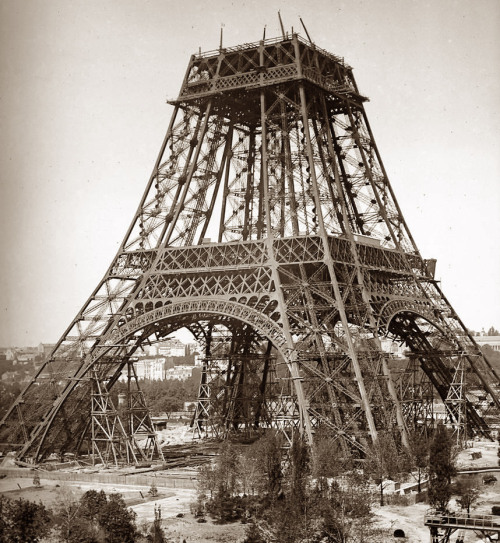
The Eiffel Tower under construction for the 1889 Exposition Universelle, Paris
More Posts from Engineeringtrivia-blog and Others
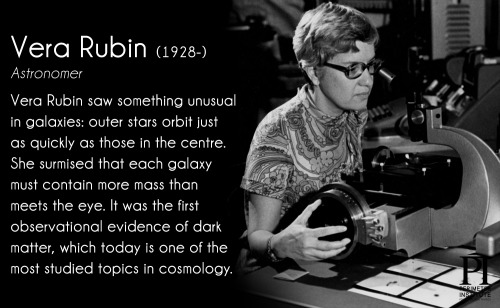
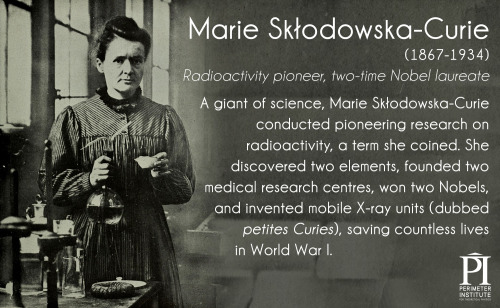
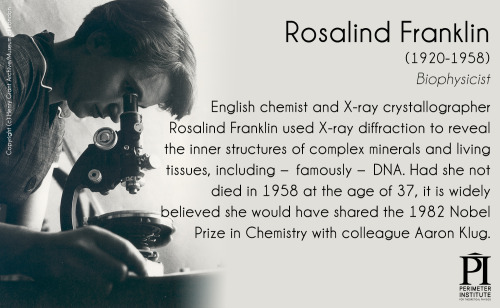

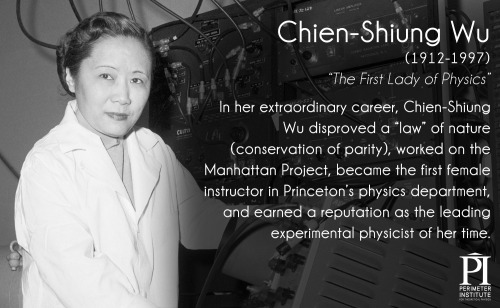
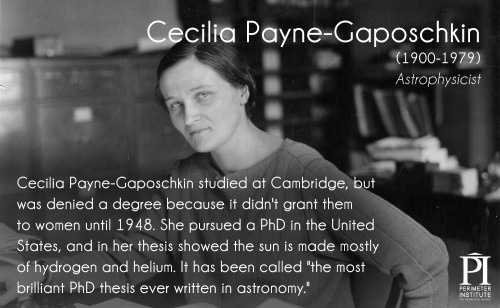
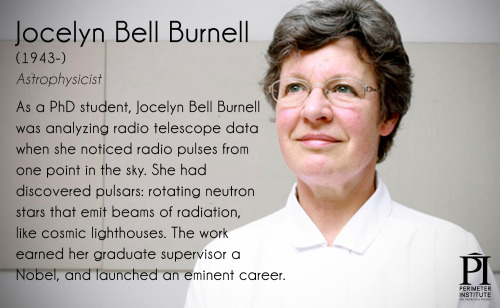
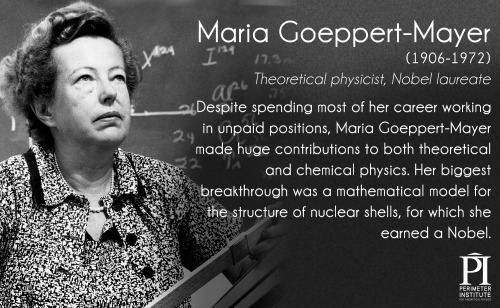
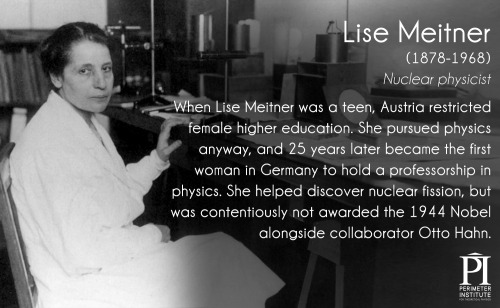
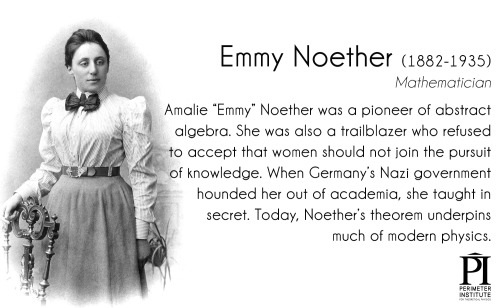
These 17 Women Changed The Face Of Physics
Click through to read the rest.

“If there is energy within the substance it can only come from without. This truth was so manifest to me that I expressed it in the following axiom: ‘There is no energy in matter except that absorbed from the medium…’ If all energy is supplied to matter from without then this all important function must be performed by the medium.”
“When radio-active rays were discovered their investigators believed them to be due to liberation of atomic energy in the form of waves. This being impossible in the light of the preceding I concluded that they were produced by some external disturbance and composed of electrified particles. My theory was not seriously taken although it appeared simple and plausible. Suppose that bullets are fired against a wall. Where a missile strikes the material is crushed and spatters in all directions radial from the place of impact. In this example it is perfectly clear that the energy of the flying pieces can only be derived from that of the bullets. But in manifestation of radio-activity no such proof could be advanced and it was, therefore, of the first importance to demonstrate experimentally the existence of this miraculous disturbance in the medium. I was rewarded in these efforts with quick success largely because of the efficient method I adopted which consisted in deriving from a great mass of air, ionized by the disturbance, a current, storing its energy in a condenser and discharging the same through an indicating device. This plan did away with the limitations and incertitude of the electroscope first employed and was described by me in articles and patents from 1900 to 1905. It was logical to expect, judging from the behavior of known radiations, that the chief source of the new rays would be the sun, but this supposition was contradicted by observations and theoretical considerations which disclosed some surprising facts in this connection.
“Light and heat rays are absorbed in their passage through a medium in a certain proportion to its density. The ether, although the most tenuous of all substances, is no exception to this rule. Its density has been first estimated by Lord Kelvin and conformably to his finding a column of one square centimeter cross section and of a length such that light, traveling at a rate of three hundred thousands kilometers per second, would require one year to traverse it, should weigh 4.8 grams. This is just about the weight of a prism of ordinary glass of the same cross section and two centimeters length which, therefore, may be assumed as the equivalent of the ether column in absorption. A column of the ether one thousand times longer would thus absorb as much light as twenty meters of glass. However, there are suns at distances of many thousands of light years and it is evident that virtually no light from them can reach the earth. But if these suns emit rays immensely more penetrative than those of light they will be slightly dimmed and so the aggregate amount of radiations pouring upon the earth from all sides will be overwhelmingly greater than that supplied to it by our luminary. If light and heat rays would be as penetrative as the cosmic, so fierce would be the perpetual glare and so scorching the heat that life on this and other planets could not exist.
“Rays in every respect similar to the cosmic are produced by my vacuum tubes when operated at pressures of ten millions of volts or more, but even if it were not confirmed by experiment, the theory I advanced in 1897 would afford the simplest and most probable explanation of the phenomena. Is not the universe with its infinite and impenetrable boundary a perfect vacuum tube of dimensions and power inconceivable? Are not its fiery suns electrodes at temperatures far beyond any we can apply in the puny and crude contrivances of our making? Is it not a fact that the suns and stars are under immense electrical pressures transcending any that man can ever produce and is this not equally true of the vacuum in celestial space? Finally, can there be any doubt that cosmic dust and meteoric matter present an infinitude of targets acting as reflectors and transformers of energy? If under ideal working conditions, and with apparatus on a scale beyond the grasp of the human mind, rays of surpassing intensity and penetrative power would not be generated, then, indeed, nature has made an unique exception to its laws.
"It has been suggested that the cosmic rays are electrons or that they are the result of creation of new matter in the interstellar deserts. These views are too fantastic to be even for a moment seriously considered. They are natural outcroppings of this age of deep but unrational thinking, of impossible theories, the latest of which might, perhaps, deal with the curvature of time. What this world of ours would be if time were curved…“
–Nikola Tesla
“The Eternal Source of Energy of the Universe, Origin and Intensity of Cosmic Rays.” October 13, 1932.
You cannot drown in Quick Sand!
No! Seriously. You cannot.
But I saw it in the movies or in the cartoon (C’mon bro, cartoon?). The gimmick that movies bring in, phew! They sometime just butcher the science out of things for entertainment.
What is Quick Sand?

Remember Oobleck, the non- newtonian fluid that hardens on the application of force?
Well, Quick Sand ( also a non-newtonian fluid ) liqueifies on the application of force.

Why you can’t sink?
Quicksand itself is harmless: a human or animal is unlikely to sink entirely into quicksand at all due to the higher density of the fluid ( It has twice the density of human )

It’s the same reason why a ship although made up of steel, yet stays afloat at sea. “The heavier the fluid, the better things float.”
But for the ship to sink it has to push aside some water, which has nowhere to go but up. So it’s a question: does the ship ‘want’ to sink more than the water ‘wants’ not to rise?
It turns out that just depends on whether the ship weighs more or less than the amount of water that would fill the same space. Real ships have lots of air inside, so they weigh less than the same volume of water, so they float.
Getting out of it albeit, is a real pain.
That being said, it is no joke that people have lost their lives in Quicksand. But the rationale for their death is often misattributed.

It’s not the quicksand that will kill you, but the sunlight, dehydration, carnivores, omnivores, hypothermia or tides that will.

It takes a feat of strength to get out of one though.
A study published in Nature found that the force needed to pull your foot out of quicksand at a speed of one centimentre per second would be equivalent to lifting a medium-sized car (in air).
So,How do you get out of it?
Well, who would be a better person to explain it than Bear Grylls himself.

Getting out of a Quicksand with Bear Grylls.

The three stages before an exam. 😂


Pumping air through a bed of sand can make the grains behave just like a liquid. This process is called fluidization. Air introduced at the bottom of the bed forces its way upward through the sand grains. With a high flow rate, the space between sand grains gets larger, eventually reaching a point where the aerodynamic forces on a grain of sand equal gravitational forces. At this point the sand grains are essentially suspended in the air flow and behave like a fluid themselves. Light, buoyant objects – like the red ball above – can float in the fluidized sand; heavier, denser objects will sink. Fluidization has many useful properties – like good mixing and large surface contact between solid and fluid phases – that make it popular in industrial applications. For a similar (but potentially less playful) process, check out soil liquefaction. (Image credits: R. Cheng, source; via Gizmodo; submitted by Justin)

Nikola Tesla Won 8 Nobel Prizes For His Work And Discoveries. No He Didn’t. These People Did Instead.
Wilhelm Conrad Röntgen, Physics, 1901: Wilhelm Roentgan was awarded the first Nobel Prize in physics for his discovery of X-Rays on November 8, 1895. Not many know this but Tesla was working with X-Rays prior to Roentgen in 1892, but used the term “radiant matter” instead. He conducted numerous experiments and some of the first imaging, which he called “shadowgraphs,” using these unknown rays in his laboratory before its destruction by fire on March 13, 1895. Tesla was also the first to warn the scientific world on the harms of these rays if not used properly.
Marie Curie, Pierre Curie and Antoine Henri Becquerel, Physics/Chemistry, 1903/1911: The three shared the 1903 Nobel Prize in Physics for their discovery and work on radioactivity in 1898. Madame Curie won the 1911 Nobel Prize in Chemistry for her discovery of radium and polonium, also in 1898. Tesla discovered radioactivity in experiments with X-Rays in 1896, and published many articles on the subject in scientific periodicals prior to the three.
Joseph John Thomson, Physics, 1906: Thomson was awarded the Nobel Prize for his discovery of the electron in 1897. Tesla originally called electrons “matter not further decomposable” in his experiments with radiant energy in 1896, but his finding of the electron goes back to when he and Thomson had a back and forth debate in 1891 about experiments with alternating currents of high frequency. Tesla claimed that his experiments proved the existence of charged particles, or “small charged balls.” Thomson denied Tesla’s claim of verifying these particles with his vacuum tubes until witnessing Tesla’s experiments and demonstrations given in a lecture before the Institute of Electrical Engineers at London in 1892. Thomson then adapted to Tesla’s methods and was able to create equipment which allowed him to produce the required high frequencies to investigate and establish his electron discovery.
Guglielmo Marconi and Karl Ferdinand Braun, Physics, 1909: Both shared the Nobel Prize for their work and development of radio. Marconi is known for proving radio transmission by sending a radio signal in Italy in 1895, but it is a fact that he used Tesla’s work to establish his discovery. Tesla invented the “Tesla Coil” in 1891, which radio relies on, and the inventor proved radio transmission in lectures given throughout 1893, sending electromagnetic waves to light wireless lamps. Tesla filed his own basic radio patent applications in 1897, and were granted in 1900. Marconi’s first patent application in the U.S. was filed on November 10, 1900, but was turned down. Marconi’s revised applications over the next three years were repeatedly rejected because of the priority of Tesla and other inventors. After Tesla’s death in 1943, the U.S. Supreme Court made Marconi’s patents invalid and recognized Tesla as the true inventor of radio.
Charles Glover Barkla, Physics, 1917: Barkla was awarded the prize for his work with Rontgen radiation and the characteristics of these X-rays and their secondary elements and effects. He was educated by J. J. Thomson. Again, Tesla worked with and explained these radiations in full detail throughout the late 1890s, showing that the source of X-rays was the site of first impact of electrons within the bulbs. He even investigated reflected X-rays and their characteristics such as Barkla.
Albert Einstein, Physics, 1921: Einstein was awarded the prize for his theoretical theories which are still praised today, and also his discovery of the law of the photoelectric effect (I have many other post that show Tesla’s fair arguments against Einstein’s theories so I will only dwell on the photoelectric effect). Einstein first postulated that light has a nature of both waves and particles in 1905. This lead to the development of “photons,” or photo electrons, which gave light a wave-particle duality. Now it must be noted that Nikola Tesla wasn’t just a theoretical physicist like Einstein, but was an experimental physicist as well. In 1896, Nikola Tesla was the first to promulgate that energy had both particle-like and wavelike properties in experiments with radiant energy. He set up targets to shoot his cathode rays at which upon reflection, projected particles, or vibrations of extremely high frequencies. Instead of taking the particle-wave duality route, he proposed that they were indeed vibrations, or basically sound waves in the ether. Nikola Tesla preceded Einstein by 4 years on the photoelectric effect publishing a patent titled “Apparatus of the Utilization of Radiant Energy.” filed in 1901, based off his experiments with radiant energy. He had a far better understanding on the matter than Einstein had, because he actually developed experimentations to prove his theories.
James Chadwick, Physics, 1935: Awarded the prize for his discovery of the neutron in 1932. Tesla’s discovery of neutrons goes back to his work with cosmic rays, again in 1896, which are mentioned in the next bit. He investigated and discovered that cosmic rays shower down on us 24/7, and that they are small particles which carry so small a charge that we are justified in calling them neutrons. He measured some neutrons from distance stars, like Antares, which traveled at velocities exceeding that of light. Tesla succeeded in developing a motive device that operated off these cosmic rays.
Victor Franz Hess, Physics, 1936: Hess won the Prize for his discovery of the cosmic rays in 1919. Tesla predated him 23 years publishing a treatise in an electrical review on cosmic rays in 1896. Tesla’s knowledge on the matter surpasses even today’s understanding of cosmic rays.
If this isn’t proof enough that Nikola Tesla got shit on, then I will add that Tesla definitely should have won the Nobel Prize for being the first person to invent the commutatorless alternating current induction motor (a huge part of the electrical power system we still use today), for his inventions and work with light bulbs, radar, for his invention of remote control, and most importantly for demonstrating the transmission of electrical energy/power without wires. Ahead of his time is an understatement.

A page of Willem ’s Gravesande’s 1720 book Physices Elementa Mathematica with Jan van Musschenbroek’s magic lantern, an early type of image projector, projecting a monster. The depicted lantern is one of the oldest known to be preserved and is in the collection of Museum Boerhaave, Leiden.










Smithsonian’s National Air & Space Museum Udvar-Hazy Center in Chantilly, Virginia, offers the unique sight of a complete Mercury spacecraft. Many of these spacecraft are available for viewing all over the United States, but this one is special because it did not fly.
During the course of a Mercury flight, several parts of the spacecraft are jettisoned and not recovered, including the retro package. This piece of equipment is visible here in my photos as the striped metal object strapped to the bottom of the heat shield. This small cluster of solid rocket motors was responsible for the safe return of the astronaut from space, making just enough thrust to change the shape of the orbit so that it would meet the atmosphere and use aerobraking for a ballistic reentry.
If this package had not fired properly, the astronaut would be faced with the dire situation of being stuck in orbit. Fortunately, this never happened in real life, but it was captured in the fanciful novel “Marooned” by Martin Cardin, in which a NASA astronaut was stranded on orbit after his retro rockets failed. When the book was released in 1964, it was so influential that it actually changed procedures for Mercury’s follow on program Project Gemini, adding more redundancy to the spacecraft’s reentry flight profile.
Alan Shepard, the first American in space and later Apollo 14 moonwalker, didn’t fail to notice that there was a leftover spacecraft at the end of the Mercury program. He lobbied for a second Mercury flight in this ship, speaking personally to both NASA Administrator James Webb and President John Kennedy about this flight. He told them his idea of an “open ended” mission in which they would keep him in orbit indefinitely until there was a malfunction or consumables began to run out. Webb stated (and Kennedy agreed) that it was more important to shelve the Mercury spacecraft in order to jump start the more capable Gemini Program. Thus, we now have this whole Mercury on display for future generations to appreciate.

Poor Alex :(. If you don’t get it, you can’t be an engineer 😂.
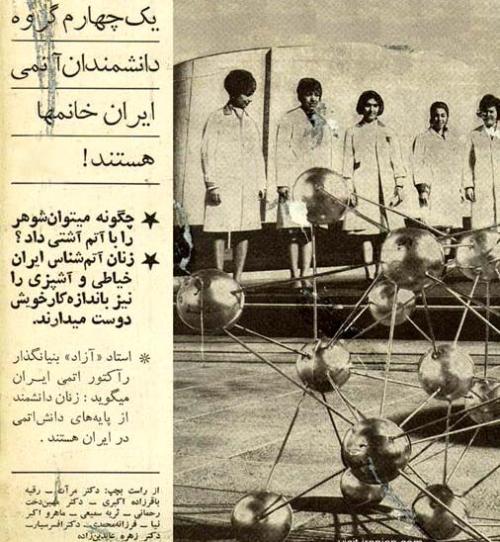
Iranian newspaper clip, 1968 which reads: “A quarter of Iran’s Nuclear Energy scientists are women.” The picture shows five female Iranian PhDs posing in front of Tehran’s research reactor.
-
 fraviala liked this · 5 months ago
fraviala liked this · 5 months ago -
 opalflowersforever reblogged this · 1 year ago
opalflowersforever reblogged this · 1 year ago -
 opalflowersforever liked this · 1 year ago
opalflowersforever liked this · 1 year ago -
 machpowervisions liked this · 2 years ago
machpowervisions liked this · 2 years ago -
 jcamilov06 reblogged this · 2 years ago
jcamilov06 reblogged this · 2 years ago -
 bipi05 liked this · 2 years ago
bipi05 liked this · 2 years ago -
 speedmasterlegend reblogged this · 2 years ago
speedmasterlegend reblogged this · 2 years ago -
 speedmasterlegend liked this · 2 years ago
speedmasterlegend liked this · 2 years ago -
 harleythree liked this · 2 years ago
harleythree liked this · 2 years ago -
 laurentcgaultier liked this · 2 years ago
laurentcgaultier liked this · 2 years ago -
 rodolfin72 liked this · 2 years ago
rodolfin72 liked this · 2 years ago -
 glitterypiratedefendor reblogged this · 2 years ago
glitterypiratedefendor reblogged this · 2 years ago -
 glitterypiratedefendor liked this · 2 years ago
glitterypiratedefendor liked this · 2 years ago -
 gfas reblogged this · 3 years ago
gfas reblogged this · 3 years ago -
 rakan-ns liked this · 3 years ago
rakan-ns liked this · 3 years ago -
 fight-the-good-fight-of-faith liked this · 4 years ago
fight-the-good-fight-of-faith liked this · 4 years ago -
 joyfullyagnostic liked this · 4 years ago
joyfullyagnostic liked this · 4 years ago -
 avr1l17th liked this · 4 years ago
avr1l17th liked this · 4 years ago -
 donotfuckwithmestraightboy liked this · 4 years ago
donotfuckwithmestraightboy liked this · 4 years ago -
 lowcountrytohighprairie liked this · 4 years ago
lowcountrytohighprairie liked this · 4 years ago -
 micpac liked this · 4 years ago
micpac liked this · 4 years ago -
 unavidamoderna liked this · 4 years ago
unavidamoderna liked this · 4 years ago